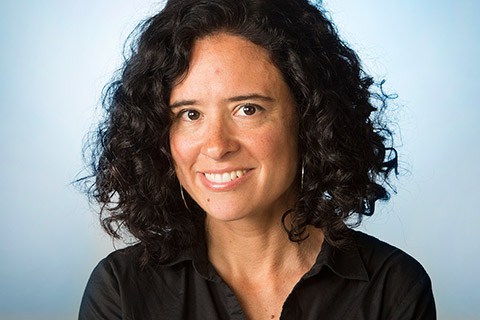In preview for the upcoming Crossing Borders: an Arts Journalism Conference, workshop teacher Anying Guo (Washington Post) conducted a brief email interview with fellow conference teacher Carolina Miranda (LA Times.)
AG: I really enjoy your Essential Arts newsletter, a weekly round-up of don’t miss arts news from local exhibit openings to stage shows like “What the Constitution Means to Me.” How has your coverage of the arts scene in your area changed as a result of nationwide crises– from the pandemic to protests, etc.?

CM: Everything has changed. For one, the museums in Los Angeles County remained closed, as do non-essential offices, which means that workspaces such as architectural studios remain atomized, with everyone working from home. Galleries are open, but there are no openings. Instead, it’s all by-appointment viewing with COVID-19 protocols. The pandemic has reshaped the way we view and access the world, so I’ve been trying to do some future-focused stories on the sorts of issues we need to be thinking about now to adequately face the post-pandemic world. In addition, the pandemic, in combination with the uprisings, has peeled back the curtain on issues of equity, labor and power at arts institutions. And these days, that is more the story than any work of art.
AG: In a year of turmoil and changes, do you think people are recognizing the value of consuming or producing art, or have you found a fair share of readers critiquing the necessity of arts coverage right now?
CM: I think folks who care about culture are going to remain engaged with the work that arts writers do. That said, I do think arts journalism is about waaaaay more than just writing about the formal qualities of objects or what any given gallery has for sale. Art is a lens through which we view the world and, as a result, so is arts journalism. Artists are engaging issues of politics, climate, environment, gender, race and so much more in their work — and these are all the burning issues of our age. So there’s no reason that the stories we write can’t somehow connect to the present. In addition, the institutions of art are affected by these very issues as well, so there is always a relevant story. That said, sometimes I love doing a good artist Q&A or profile. Sometimes I, like everybody else, just want to hear someone talk about what inspires them. We all need a break from the doom scrolling.
AG: Do you think the role of an arts journalist has evolved since you started at the Times, and how has that affected how you approach your work and platform?
CM: I think a lot has evolved and it has to do with media evolving. Many publications have shut down. Magazines have consolidated. Some websites have been folded into others. (Like Curbed recently becoming part of New York Magazine.) Yesterday, it was announced that two dozen employees at our local NPR affiliate, KCRW, were taking the buyout — including Frances Anderton, who for years has hosted an important podcast called “Design and Architecture.” All of this means that certain stories in L.A. will not get covered. It’s all made me rethink the nature of my work. When I started at the L.A. Times, I was much more focused on shorter, quicker, bloggier stories. But these days, I’m more focused on trying to write longer in-depth pieces that explore the underlying issues of a phenomenon rather than recounting every last newsbreak. Part of this has to do with the natural evolution of my career. (I’m at an age where I can do that.) But also because I think at this moment in time, it’s important to step back and have a look at the forest, not just a series of trees.
View their workshop offerings on the conference web page here.

